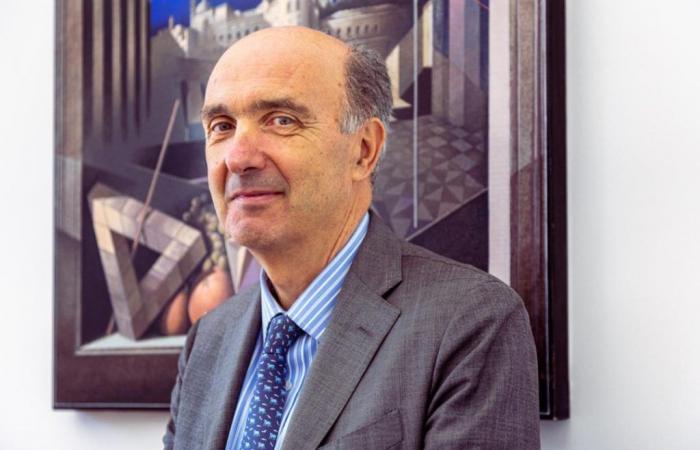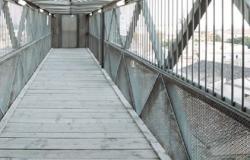«Tourism is indeed an opportunity, but it could turn into a risk if not managed correctly. In other words, you can’t sell yourself short. In the Marche we should strengthen the “tourism system” by bringing together the many cultural realities that are expressions of the territories that characterize our region. Even if in the last ten years at least politics has had a greater awareness, administrations often continue to move independently of each other». So he says Giorgio Calcagninilong-time economist, scholar with a dense Italian and international curriculum, rector of the University of Urbino Carlo Bo.
Alongside his academic activities, he has been and is present in numerous initiatives and cultural institutions (for example on the board of directors of the Rossini Opera Festival in Pesaro from 2016 to 2020). Born in the city of Urbino in 1956, Calcagnini is full professor of political economy: he studied in Ancona, at the time a branch of the University of Urbino. He graduated in 1980. He worked in Rome, first at the Institute for the Study of the Economy (ISCO), then at the Confindustria Study Center, then in 1988 he won a competition as a researcher and in 2004 he became a professor. He will lead the university until October 31, 2026.
Professor, what is your assessment of cultural tourism in the Marche?
In my opinion, as a regional tourism system we must make a greater effort to promote our territories. When I see that the castle of Gradara, despite the undoubted advantage of being close to the coast and, therefore, to tourists in the summer season, has more visitors than the Ducal Palace of Urbino I start to doubt that there is something wrong. It is not a problem of the single institution, it is of the system: greater integration between the different proposals should be achieved. Tourists come to Urbino, but it is often a “hit and run” and I fear it is the same for other areas, especially in the hinterland. Instead, we should enhance the entire territory with a tourist offer that promotes, for example, Montefeltro. Here even in the churches we find beautiful, incredible paintings and frescoes. For example, in Mercatello sul Metauro the Church of San Francesco has a valuable, restored and very beautiful fourteenth-century fresco, without forgetting the altarpiece by Giovanni Santi in the Convent of Montefiorentino in the Municipality of Frontino. I also like to stop at the 10th century abbey of San Vincenzo, just outside the Gola del Furlo, on the Flaminia: it is beautiful, bare, inside you can sense vibrations that you cannot perceive in other churches, perhaps due to the simplicity that brings us back to religious values details. Especially in the last ten years, politics has had greater awareness both at a regional and local level in understanding that cultural tourism is a resource, it creates jobs and wealth, it helps to keep people in the area. However, many times that tourism moves independently while it would be necessary to encourage collaboration and synergy, that tourism system I mentioned above. It would be necessary to “sell”, excuse the term, not only Urbino or Loreto, but the two cities together, also involving other more or less contiguous territorial entities in the project. A further step forward must therefore be taken, compared to the current situation, to bring out a strong and comprehensive proposal that can be more appealing to tourists.
How in a good part of Italy do we look too much at our bell tower?
Yes, but it’s not just the bell tower. There is also an economic theme here: we have very small businesses that move independently, the idea of individualism is very strong. It may be a value, but in the current context it is a limit, strength is created by networking with other companies if it is not possible to reach larger dimensions.
And in internal areas?
In the Marche, but the phenomenon is more general, a progressive decrease in residents has been observed for years due, in part, to fewer employment opportunities compared to the coast, but also to the lower quality and quantity of services. In the hinterland I also see how those territories are poorly served by modern services: cell phones often don’t work, it’s more complicated to have fast internet lines, it’s a vicious circle: the population decreases, commercial activities decrease, schools close or merge and connections are reduced. If we want to at least block depopulation, a greater effort must be directed towards the internal areas. Here the IAT (Tourist Reception Information, Ed.) points often struggle to stay open throughout the year because there is a lack of resources. To encourage tourism and make the most of the natural, historical, artistic and cultural heritage of our region, and in particular of the internal areas, it is necessary to invest in this sector.
The main qualities of the Marche people?
They are determination, very direct relationships between people, the ability, as in Italy, to come together in difficulties. I think of the earthquake, the flood. However, this quality emerges above all in emergency cases. We are a little weaker in planning.
Citing the flood, the Senigallia flood in September 2022 highlighted a factor that extended to the entire peninsula: over the decades too much has been built and where it shouldn’t have been.
There was also a flood near Urbino, in the Cantiano basin. It is easy to answer that more investments and greater attention to the territory are needed. But the problem has become more complex over the years. For example, I was told that it has become complicated to keep the river beds clean and the tree growth on the banks. It was no longer possible, except after flood situations, to use recovered wood for other uses and therefore the incentive for (authorised) private individuals to undertake maintenance of the riverbeds was no longer available. In many cases, “natural” barriers have thus been created and during above-average rainfall some rivers/streams have flooded. We are experiencing a climatic transition characterized by extreme events and rainfall concentrated in a very short period of time generates pressure on river basins that did not exist in the past.
Off-site university students represent an economic and cultural resource for the places that welcome them. Thinking of the universities of Urbino, Macerata, Camerino, and the Polytechnic of the Marche, do the same reception difficulties exist in the region as happens in many cities?
No, I think the Marche response is positive. In Urbino, Macerata and Camerino the presence of students is fundamental for economic life. Ancona has the port and industrial activities, so the students’ contribution to income creation is relatively lower than other university centres, but this does not mean they should be neglected. Urbino has a higher average presence of students from outside the region than other cities, which has in part been favored by investments made in the past on university residences. On the topic of residences, sensitivity has also grown at ministerial level and, consequently, all four universities have received funding to increase accommodation. Among other things, there is a strong collaboration between the four universities and, thanks also to the collaboration with the other universities of Umbria and Abruzzo, it presents itself as a unique training system in central Italy. Right now we are working on an orientation campaign for new students to say “come and study at the Centre”. As part of the research, we have won Pnrr projects. Safeguarding the peculiarity of each individual university, we are trying to systematize our potential to overcome weaknesses and this policy is working well. We have an objective which is to prevent our young people from going to study in other regions, especially in the North, from where they are unlikely to return to our territories.
How many university students are there in total in the Marche region?
Around 44 thousand, of which 26 thousand are women.






